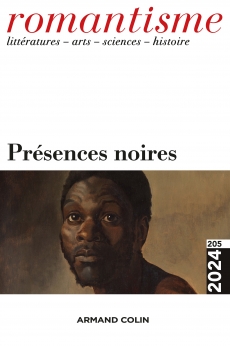
ROMANTISME N°205 (3/2024)
Pour acheter ce numéro, contactez-nous
Recevez les numéros de l'année en cours et accédez à l'intégralité des articles en ligne.
Durant la seconde moitié du XIXe siècle, de nombreuses bamboulas furent éditées à Paris : ce sont des oeuvres instrumentales pour piano et chansons pour voix et piano. À l’origine évoquant un tambour africain, le mot Bamboula fut par la suite employé pour désigner une danse ou un chant nègre. De Louis-Moreau Gottschalk à OlivierMétra, en passant par Henri Chatau ouMarie-Louise Du Fresne de Virel, les compositeurs de Bamboulas sont divers, entre natifs des Amériques ou Français de l’hexagone. Cette édition de partitions de bamboulas au XIXe, aurait-elle participé à la redéfinition de ce mot ? Nous évoquons tout d’abord sa signification et son utilisation en Martinique, puis nous abordons quelques pièces musicales qui introduisent le « nègre » dans la musique de salon à Paris. Enfin, nous analysons cette double représentation du « nègre » dans la musique française du XIXe siècle.
In the second half of the 19th century, numerous bamboulas were published in Paris, including instrumental works for piano and songs for voice and piano. Originally evoking an African drum, the word Bamboula was later used to designate a Negro dance or song. From Louis-Moreau Gottschalk to Olivier Métra, Henri Chatau to Marie-Louise Du Fresne de Virel, the composers of Bamboulas range from natives of the Americas to French nationals. Did the publication of bamboula scores in the 19th century help redefine the term ? First, we look at the meaning and use of the term in Martinique, followed by a selection of musical pieces that introduced the “nègre” to salon music in Paris. Finally, we analyze this dual representation of the “nègre” in 19th-century French music.

